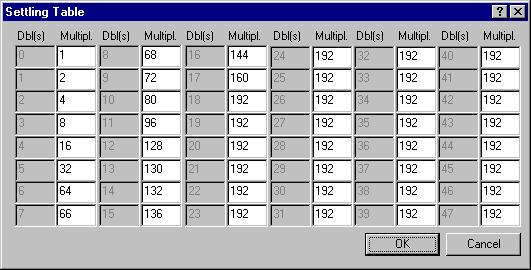The Regulated doubles scoring system is historically the earliest method of regulating linear doubling and it is used in the Chinese Transitional rule preset. This system is replaced by more advanced methods (Faan-Laak and Mangan) in modern Asian Mah Jong, but is supported in Four Winds because of its versatility.
The Regulated doubles system is virtually identical with the Faan-Laak system, but – like the Mangan system – it allows the use of regular point unit in scoring. It differs from the Mangan system mainly by not assuming anything of the point scores earned by the hand, and can accordingly be used with systems that give relatively high basic scores for the hand.
Rather than final scores, the values specified by the settling table are just regulated doubles that are used to multiply the basic point score earned by the hand. Accordingly, the maximum final score a hand can receive is specified by the Limit points setting (not by the highest value of the settling table, as in the Faan-Laak and Mangan scoring systems).
Notice that the final score determined by the settling table is not necessarily the same as the amount of final payment points. E.g., each loser normally pays double if the winner goes out self-drawn, and if the winner goes out on a discarded tile, the discarding player usually pays double while other losers pay normally.

Settling table used in the Chinese Transitional rule preset. The linear
doubling is reset by using an
interval of six doubles. The hands above 18 doubles all give the same
multiplier value (192), since
there is no point in specifying values for higher amounts as the limit for these
rules is 2,000 points.
Variations related to settling tables:
Overview
Faan-Laak scoring
Auxiliary points
Mangan scoring
Related topics:
Creating and managing custom rule presets
Initial and Limit points
Logic of scoring system
Inclusion and scoring of hands and patterns
Rounding
Penalties